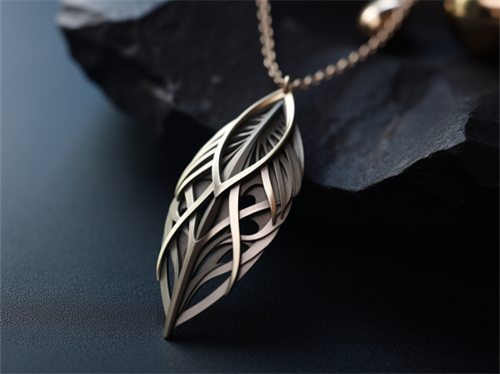钨粉 是一种由金属钨制成的灰色细粉末。它具有独特的性能,因此在许多工业和商业应用中都非常有用。本指南全面介绍了钨粉、其制造方法、应用、供应商、成本等。
钨粉概述
钨粉,又称钨金属粉末或钨粉,是指微米大小的纯钨元素颗粒。钨粉呈灰黑色粉末状,手感沉重,有砂砾感。
在所有金属中,钨的熔点最高,密度和硬度也特别高。这使得钨粉具有优异的高温性能、耐磨性、硬度和耐用性。同时,它还可以与其他金属制成合金,或通过粉末冶金技术制成各种形状。
钨粉的一些主要特性和特点包括
- 密度高 - 19.3 克/立方厘米,几乎是铅的两倍
- 熔点高 - 3422°C,在所有金属中最高
- 热膨胀系数低
- 出色的导热性和导电性
- 耐磨损、侵蚀和电弧
- 生物相容性好,纯净时无毒
- 灰黑色,带金属光泽
钨粉的粒度从 1 微米到 150 微米不等。颗粒形状可以是球形、片状或不规则形。较细的粉末可提供更均匀的混合和更好的致密性。在钨砝码等应用中,粗颗粒是首选。
生产钨粉的主要工艺是氢还原钨氧化物。纯钨粉呈明亮的银灰色,而不纯的钨粉则呈棕色或黑色。

钨粉的应用和用途
钨粉在以下主要领域有多种用途:
军事和国防
- 用于动能穿甲弹、穿甲弹、导弹和火箭配重的钨合金
- 反坦克弹药中的碳化钨球和飞镖
- 核反应堆的辐射屏蔽
汽车
- 灯泡和灯具中的钨丝
- 接触点和电气元件可承受电弧
- 碳化钨球轴承和其他耐磨部件
- 用于阀门和涡轮增压器等发动机部件的钨合金
- 配重和减震组件
制造业
- 用碳化钨制造的切割工具、模具和冲头
- 用于焊接的钨电极
- 添加到钢中以制造高速工具钢
- 用于电接触和电阻加热的部件
- 金属蒸发舟和坩埚
电子产品
- 半导体散热器和热管理组件
- 气相沉积舟和加热元件
- 场发射尖端、电子发射器和阴极
- 触点、连接器和导线
- 辐射屏蔽
医疗保健
- 用于 X 射线机器和癌症放射治疗的致密钨合金准直器、过滤器和屏蔽装置
- 钨粉与聚合物混合用于制造辐射屏蔽用致密复合材料
- 医疗设备的压载砝码
- 医疗植入物(如支架和骨螺钉)部件
其他应用
- 钨合金配重,用于高尔夫球杆、游艇龙骨、直升机旋翼等应用领域
- 飞镖、保龄球、高尔夫球杆头等运动器材的砝码
- 钓饵、潜水饵
- 珠宝组件
- 赛车中的压舱物
钨粉的种类
钨粉根据颗粒大小、形状、纯度、粉末密度和预期用途分为不同等级:
| 类型 | 说明 |
|---|---|
| 超细 | 颗粒尺寸小于 1 微米,表面积大,用于化学工艺 |
| 亚微米 | 1-5 微米,球形,高纯度,用于硬质合金 |
| 精美 | 1-10 微米,高密度,用于钨研磨产品 |
| 中型 | 10-40 微米,中等表面积,一般用于粉末冶金 |
| 粗 | 40-150 微米,表面积小,用于称重 |
| 纯净 | 99.9%-99.99% 钨,杂质含量低,亮银灰色 |
| 商业 | 97%-99% 钨,含有少量杂质,呈灰色或棕色 |
| 形状 | 片状、针状、树枝状或定制形状,特殊应用 |
钨粉规格
工业用钨粉必须符合 ISO、ASTM、DIN、JIS、GB 和 GOST 等国际标准规定的一系列物理、化学和形态规格:
| 参数 | 典型规格 |
|---|---|
| 颗粒大小 | 1 - 150 微米 |
| 粉末形状 | 球形、不规则、片状 |
| 表观密度 | 未烧结粉末为 2 - 3 克/立方厘米 |
| 水龙头密度 | 未烧结粉末为 4 - 6 克/立方厘米 |
| 纯净 | 99% 至 99.995% 钨 |
| 氧气含量 | <100 - 1000 ppm |
| 碳含量 | <100 - 500 ppm |
| 重金属杂质 | 每种元素的百万分率限制 |
| 表面积 | 粉末为 0.5 - 15 m2/g |
| 颜色 | 亮银灰色至棕灰色 |
| 粉末流速 | 霍尔流量计测试 |
最佳的粉末特性(如粒度分布、形态、表观密度和敲击密度)取决于最终部件的压制和烧结要求。定制钨粉混合物的配方可满足每种应用的需求。
设计和工程标准
钨粉末冶金部件的设计符合有关成分、制造、质量控制测试和应用的各种国际标准:
| 标准 | 详细信息 |
|---|---|
| ASTM B777 | 钨基高密度合金的标准规格 |
| ISO 13320 | 硬金属规格 - 金属粉末压块 |
| MIL-T-21014 | 钨和钨合金轧机产品的军用规格 |
| SAE-AMS-T-21014 | 钨轧机形状的航空航天材料规格 |
| GB/T 13383-2008 | 中国钨棒材和钨条材标准 |
| JIS C 2805 | 日本钨研磨产品工业标准 |
| DIN 2240 标准 | 德国重金属轧机产品标准 |
部件和粉末制造商确保符合化学、微观结构、机械性能、无损检测、质量保证等方面的适用标准。
制造和生产
金属钨粉主要是通过氢还原钨氧化物生产的:
氧化钨粉末 + 氢 → 钨粉末 + 水蒸汽
这是一种放热过程,在专门的还原炉内,于 700-1000°C 的氢气环境中进行。
钨粉生产的关键步骤有
- 采矿和采掘 - 钨矿(如黑钨矿和白钨矿)经过开采、破碎、碾磨和泡沫浮选浓缩后,可生产出仲仲钨酸铵(APT)。
- 转化为氧化物 - APT 经热分解生成三氧化钨 (WO3),再研磨成黄色/棕色的细粉末。
- 氢气还原 - WO3 粉末在温度高达 1000°C 的推送炉、带式炉或旋转炉内与干氢气一起进行还原。
- 铣削和分类 - 还原后的钨粉在球磨机中碾磨,分成不同的粒度,然后进行进一步加工。
- 混合和压实 - 粉末经过混合、润滑、压制成 "绿色 "预型件,然后烧结成成品部件。
高纯度等级的粉末可能需要经过额外的氢气或真空脱气处理,以降低杂质含量。异型粉末和表面处理粉末采用专门技术制造。粉末的形态、粒度分布、纯度和化学成分都经过严格控制,以满足各种应用的需求。

供应商和定价
全球领先的钨粉供应商包括
| 公司名称 | 地点 |
|---|---|
| 水牛钨 | 美国 |
| 中西部钨业 | 美国 |
| TaeguTec | 韩国 |
| 沃尔夫拉姆 | 奥地利 |
| HC Starck | 德国 |
| 厦门钨业 | 中国 |
| JX 日本矿业 | 日本 |
钨粉的定价取决于以下因素:
- 纯净 - 范围从 US$50/kg 的 97% 钨粉到超过 $1000/kg 的 99.995% 超细钨粉
- 颗粒大小 - 超细粉末 US$100/公斤,微米级粉末 US$30-60/公斤,粗粉更便宜
- 数量 - 以吨为单位的批量价格较低
- 粉末特性 - 球形和高密度首选,压制成本更高
- 产品一致性 - 全球知名品牌的定价更高
价格范围:
- 低端:每公斤 $30-$50
- 中级:每公斤 $50-$150
- 高纯度/高性能:每公斤 $150-$1000
联系主要供应商,根据您的规格和采购量获得准确报价。
如何选择钨粉供应商
以下是选择可靠的钨粉制造商和供应商的提示:
- 审查公司资质,包括经营年限、声誉和客户
- 确保他们能够定制粉末特性以满足您的要求
- 质量稳定、测试严格,并通过 ISO 9001 认证
- 评估其生产能力以及在必要时扩大供应规模的能力
- 考虑地点和物流问题,以便高效地向您的设施交付产品
- 在大规模采购前要求提供样品以测试粉末质量
- 比较不同供应商的定价,以确保成本效益
- 确保产品的高纯度、可靠性和批次间的一致性
- 检查交货时间和库存可用性,避免缺货
- 评估小规模测试订单或满足紧急要求的灵活性
- 考虑混合、化学分析和定制包装等增值服务
安装和操作指南
储存和处理
- 将钨粉存放在清洁、干燥、密封的容器中,远离潮气、火花和火焰
- 如果存放时间超过 6 个月,则使用惰性气体保护
- 限制暴露在空气中,以尽量减少氧化
- 提供适当的通风和集尘系统
- 避免灰尘、油类或其他粉末细粒的污染
- 使用干净的铲子和工具进行处理;穿戴个人防护设备,如口罩、手套和护目镜
- 防止粉末在表面上堆积,将粉尘爆炸风险降至最低
加工和操作
- 在压实前用硬脂酸盐或蜡润滑粉末
- 压制时,使用用硬脂酸锌润滑的工具钢或碳化钨模具
- 以最佳压力平稳地压紧粉末
- 烧结时,使用氢气炉或真空炉和受控加热曲线
- 根据粉末等级,遵循建议的烧结温度和时间
- 在惰性气氛下缓慢冷却炉内烧结部件
- 根据需要,还可采用渗透、热处理或 HIP 等其他步骤
- 处理粉末和操作设备时遵守安全预防措施
维护
- 定期检查粉末容器和储存区是否损坏或泄漏
- 立即清理溢出的粉末,防止细粉堆积
- 将废钨粉和废料作为危险工业废物安全处置
- 定期清洁粉末冲压模具、冲头和其他工具
- 按照制造商的说明润滑和维护压力机
- 按照建议的时间表进行炉子维护和重新校准
使用钨粉的利与弊
优势
- 熔点高,具有优异的高温性能
- 耐磨、耐腐蚀,延长部件使用寿命
- 极高的密度带来了重量和惯性
- 生物相容性好,纯净时无毒
- 良好的导热性和导电性
- 热膨胀系数低
- 可进行合金化处理,以优化硬度等性能
- 粉末冶金技术可制造复杂的网状部件
- 可回收利用,以回收钨
缺点
- 与其他金属粉末相比价格昂贵
- 全球供应有限,生产集中在中国
- 未改性时较脆,需要合金化或烧结
- 在完全烧结状态下进行加工具有挑战性
- 高熔点使制造过程耗费大量能源
- 延展性和抗冲击性低于钢材
- 在高温下容易氧化
- 加工过程中易受污染

常见问题
问:有哪些不同等级的钨粉?
答:主要牌号根据粒度(超细、细、中、粗)、纯度(99.9% 至 99.995%)、粉末形状(球形、不规则、片状)和最终用途(一般用途、冲压、焊接等)进行分类。
问:哪种粒度最适合压制和烧结?
答:较细粉末(1-10 微米)和较粗粉末(10-40 微米)的双峰混合是最佳选择,可提高粉末流动性和绿色密度。也可使用超细粉末。
问:钨粉中的杂质有什么影响?
答:碳、氧、铜和铁等杂质会降低性能。超高纯度牌号的杂质较少,适合要求严格的应用。
问:钨粉是如何压制和烧结的?
答:在模具中使用高压将粉末压制成绿色压制物,然后在氢气或真空环境下以接近 2000°C 的温度进行烧结。
问:钨粉中可以添加哪些合金元素?
答:钨与镍、铁、钴、铜和铼等元素制成合金,以提高强度、延展性和其他性能。
问:钨粉的建议储存方法是什么?
答:存放在密封容器中,置于清洁、干燥的地方,防止受潮和污染。限制与空气接触。超过 6 个月的长期储存应使用惰性气体保护。
问:钨粉如何回收和再利用?
答:废钨粉和固体钨可通过破碎、研磨、混合和重新压缩制成新产品,从而实现循环利用。性能不会下降。
问:钨重合金的主要用途是什么?
答:军事和国防部件,如动能穿透器、辐射屏蔽、配重、压载配重、航空航天和汽车应用中的减震等。
问:使用钨与贫铀相比有什么优势?
答:钨无放射性,处理起来更安全,争议较少,比贫化铀更容易获得,同时具有相似的密度。
